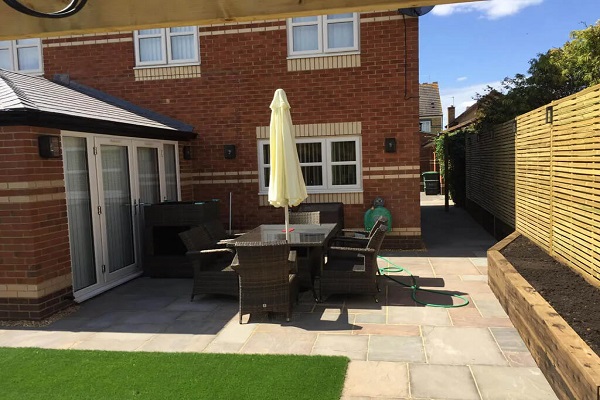
Retaining walls might seem like innocent blocks of concrete or stone. But when they’re caught between neighbors, they can turn friend into foe faster than you can say, “That’s not on my land!” Disputes over retaining walls are more common than you'd think and often more complex than they first appear.
Are You in a Retaining Wall Tug-of-War?
Does your neighbor claim the leaning wall is your problem? Are you arguing over who should pay to fix that crumbling structure holding back a mini landslide? Welcome to the world of retaining wall disputes.
These conflicts typically start when a wall is built, modified, or quietly removed without notice or agreement. Sometimes the wall starts cracking, shifting, or giving way. Other times, it's water runoff that causes the headache, with one property getting drenched and the other denying all responsibility.
And then there’s the classic: “That wall’s not on my side!” Cue the drama.
Who Actually Owns (and Pays For) That Retaining Wall?
Here’s where things get murky. Ownership and responsibility come down to:
-
Who changed the land’s level? If someone dug, filled, or regraded the terrain, they usually foot the bill for any wall needed to hold it back.
-
Who benefits from the wall? Generally, the person whose land is supported by the wall often the higher property is the one responsible.
-
Where is the wall located? If it’s entirely on one side, that owner’s in charge. If it straddles the boundary, you might be in it together legally speaking.
And don’t dismiss handshake agreements or text-message promises. Informal chats can morph into binding arrangements if they align with local law.
Do You Need Council Approval to Build a Retaining Wall?
Usually, yes. Especially if your wall is:
-
Over 1 metre high
-
Near a property boundary
-
Supporting structures like driveways or sheds
-
Involving serious excavation
Expect to provide engineering drawings, drainage plans, and compliance documentation. Skipping this step? You might save time now but it could cost you a fortune (and a court date) later.
Can You Make Your Neighbor Pay?
Only in certain cases. Cost-sharing happens if:
-
Both properties benefit from the wall
-
There’s a written agreement
-
A legal order or council directive says so
But here's the kicker: the one who needs the wall usually pays for it. So if your neighbor dug out their backyard and now their soil’s threatening your fence, they’ll likely carry the can.
What If the Retaining Wall Fails?
When a retaining wall gives way, the consequences aren’t just cosmetic. You could face:
-
Soil collapse
-
Damage to structures or fences
-
Flooding from poor drainage
-
Legal battles over negligence
What should you do?
-
Photograph the damage – and document everything.
-
Bring in a structural engineer – get a clear diagnosis.
-
Review title documents and past surveys – know exactly where that wall sits.
-
Communicate clearly with your neighbor – this is not the time for cryptic texts or passive-aggressive glances across the garden.
-
Contact your council – especially if you suspect non-compliance or unapproved construction.
Legal Changes You Should Know About
Recent developments have reshaped the landscape:
-
Stricter NCC Guidelines – Taller, complex walls now require tougher standards.
-
Developer-installed Walls – In new estates, many retaining walls are pre-built by developers. Know what you’re inheriting.
-
Mandatory Mediation (in some states) – NSW and VIC now require parties to attempt mediation before going to court.
-
Court Rulings – More decisions are holding negligent builders or non-permit holders accountable for damage.
How to Prevent a Retaining Wall Dispute (Yes, It’s Possible!)
Want to avoid neighborly wars and keep your weekends free from courtroom drama?
Here’s your action plan:
-
Talk early, talk often – Communicate your plans clearly.
-
Get a boundary survey – Know where your land ends.
-
Inspect your walls regularly – Maintenance today saves lawsuits tomorrow.
-
Consider drainage – Water doesn’t respect property lines.
-
Hire pros – Don’t cut corners. Bad builders build bad blood.
-
Put it in writing – If you're sharing a wall or cost, make it official.
-
Know the rules – Council regulations are there for a reason.
-
Document everything – From texts to permits. You’ll thank yourself later.
Wait… What Is a Retaining Wall Again?
A retaining wall is a structure designed to hold back soil and manage changes in ground elevation. Some are decorative and dainty; others are multi-ton concrete fortresses.
They range from:
-
Tiny garden walls (100mm brick stackers)
to -
Massive infrastructure supports holding up roads or terraces
Still Not Sure Who’s Responsible?
In most cases, the person who benefits from the wall usually the higher ground owner is responsible for maintenance and repair. But don’t rely on assumptions. Agreements, surveys, and council records all play a part.
Need Help with a Retaining Wall Dispute?
You're not alone. If you’re stuck in the mud (literally or legally), we can help you sort through the details, understand your obligations, and take the next step with confidence.
Because no one wants a retaining wall turning into a wall of silence between neighbours.
